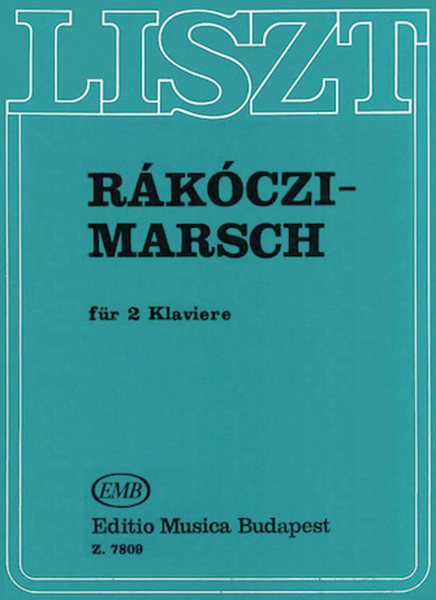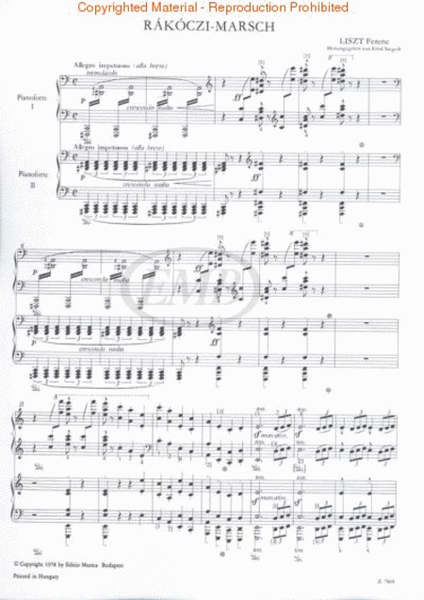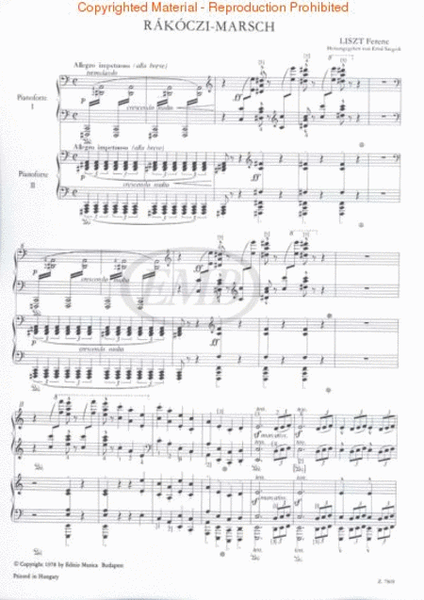Rákóczi March
Two Pianos, Four Hands
-
Ships in 24 hours
Details
Description
SKU: HL.50511329
Two Pianos, Four Hands. Composed by Franz Liszt. Arranged by Ernõ and Szegedi. Romantic. EMB. Classical. Book Only. 31 pages. Editio Musica Budapest #Z7809. Published by Editio Musica Budapest (HL.50511329).ISBN 9790080078099. UPC: 073999759815. 9.0x12.0x0.095 inches. Erno Szegedi.
In the course of his long life Liszt wrote countless arrangements of the Rakoczi March, one of the most popular Hungarian melodies of his time. Among the piano versions for two hands the Fifteenth Hungarian Rhapsody is the most widely known which was published in 1853 by Schlesinger in Berlin (Raabe 106/15a, Grove 244/15a) and which could already draw on several, partly unpublished and partly published arrangements. In 1865 a new symphonic orchestral version, longer and more complex than the previous ones, was first performed (R. 439, G. 117). Liszt himself considered this more significant than all his previous Rakoczi arrangements, which is also indicated by the fact that in1871 he had another two-hand piano version, virtually as an extract of this, published by Schuberth in Leipzig (R. 106/15b, 244/15b), a facilitated two-hand piano arrangement, a four-hand version (R. 310, G 608) as well as an arrangement for two pianos.
Liszt hat den Rakoczi-Marsch, eine der beliebtesten ungarischen Melodien seiner Zeit, in seinem langen Leben unzahlige Male bearbeitet. Von den zweihandigen Klaviervarianten ist die XV. Ungarische Rhapsodie am bekanntesten, die 1853 im Berliner Verlag Schlesinger erschien (Raabe 106/15a, Grove 244/15a) und die sich auf mehrere zum Teil veroffentlichte, zum Teil unveroffentlichte Bearbeitungen stutzen konnte. 1865 wurde eine neue umfangreichere und kompliziertere Version des Marsches fur sinfonisches Orchester das erste Mal aufgefuhrt (R. 439, G. 117). Liszt selbst hielt diese Bearbeitung des Rakoczi-Marsches fur die bisher bedeutendste, was auch daraus hervorgeht, dass ergeradezu als Auszug der Bearbeitung 1871 bei Schuberth in Leipzig eine neue zweihandigen Klavierversion (R. 106/15b, G. 244/15b), einen vereinfachten zweihandigen Klaviersatz, eine vierhandige Variante (R. 310, G. 608.



 Share
Share